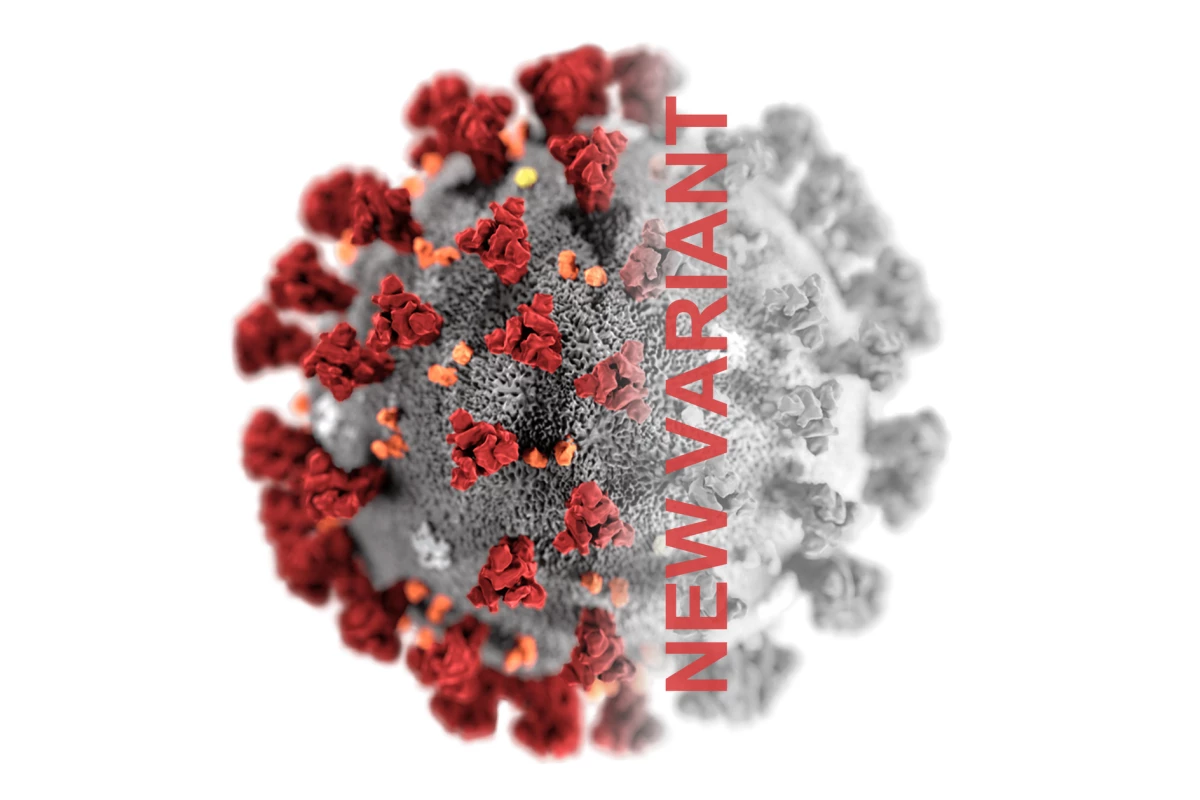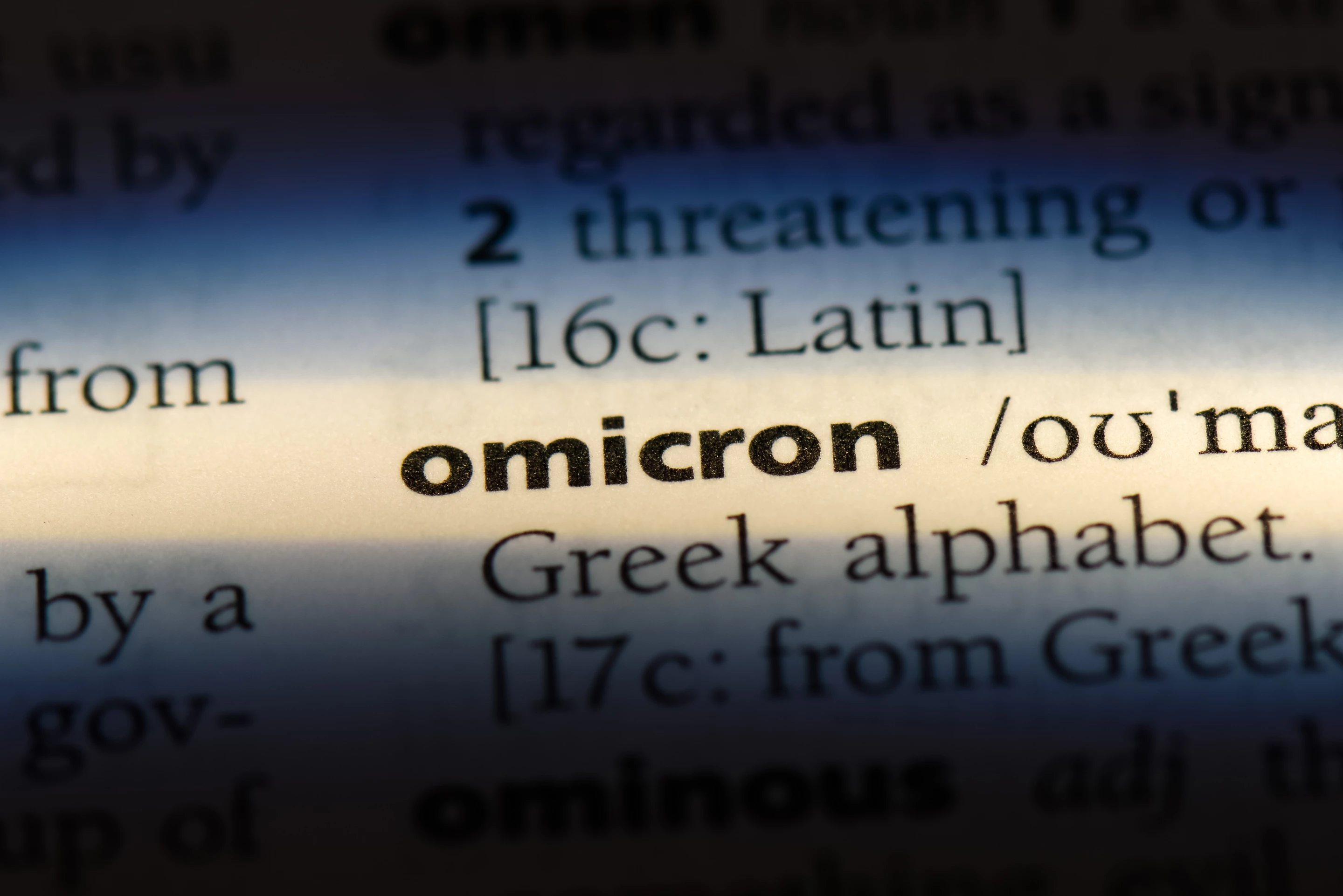On November 9, a specimen of SARS-CoV-2 was taken from an infected patient in Botswana. Genomic analysis quickly revealed this specimen to be a novel variant, initially dubbed B.1.1.529.
Scientists in South Africa rapidly tracked the emerging variant to a number of local provinces. It was formally reported to the World Health Organization on November 24 and two days later the WHO’s Technical Advisory Group on SARS-CoV-2 Virus Evolution (TAG-VE) officially designated B.1.1.529 a "Variant of Concern" (VOC), the highest alert category for an emerging coronavirus variant. It was then formally issued the label "Omicron."
Why is it called Omicron?
Early on in the pandemic the WHO acknowledged the need for a simple way to communicate emerging SARS-CoV-2 variants so it was decided new variants would be named after letters of the Greek alphabet. The labels are designated by the TAG-VE, an independent advisory panel that evaluates whether a variant is of global public health significance.
The most recent variant to be offered this kind of label was Mu in late August.
What happened to Nu and Xi?
Omicron is the thirteenth SARS-CoV-2 variant to receive a formal WHO designation but it has been tagged with the 15th letter of the Greek alphabet. A statement from the WHO indicates it has decided to skip Nu and Xi, the 13th and 14th letters of the Greek alphabet, bringing us up to Omicron as the latest variant label.
“Two letters were skipped – Nu and Xi – because Nu is too easily confounded with “new” and Xi was not used because it is a common surname and WHO best practices for naming new diseases (developed in conjunction with FAO and OIE back in 2015) suggest avoiding “causing offense to any cultural, social, national, regional, professional or ethnic groups,” the WHO said in a recent statement.

Why is Omicron such a concern?
The biggest red flag surrounding Omicron is the sheer number of mutations this variant has accumulated. Vinod Balasubramaniam, a virologist from Monash University in Malaysia, says the mutations seen in Omicron are all in regions we have previously linked to increased transmissibility and immune escape.
“B.1.1529 has 32 mutations located in its spike protein,” explains Balasubramaniam. “These include E484A, K417N and N440K, which are associated with helping the virus to escape detection from antibodies. Another mutation, N501Y, appears to increase the ability of the virus to gain entry to our cells, making it more transmissible. Another important matter to note is that, most of the major mutations are located at the RBD [receptor binding domain] of the spike protein, the exact location where antibodies from vaccines are binding/targeted, in other words, the 32 mutations detected in the new variant’s spike protein will change the shape of this structure, making it problematic for the immune response induced by the vaccines.”
It is too early to understand the real-world impact of Omicron but the variant has been associated with a major spike in COVID-19 cases in South Africa’s Gauteng province. Positivity rates (the amount of tests conducted relative to the amount of positive cases detected) in that region have dramatically risen from 1 percent to 30 percent in the last two weeks.
Doctors in local areas where Omicron is emerging have so far noted the variant is only causing mild disease. But these initial infections have been detected primarily in younger populations, who generally would only experience mild COVID-19, so it has yet to be determined whether Omicron causes more severe disease.
Where did Omicron come from?
A particularly unusual aspect to Omicron’s emergence is its oddly isolated genomic lineage. The sheer dominance of the Delta variant over the past six months led many scientists to predict any future concerning variants would “almost certainly” descend from Delta.
However, Trevor Bedford, a researcher studying the evolution of viruses, says Omicron has not emerged from a recent variant. In fact, it seems Omicron’s closest evolutionary connection is a strain of SARS-CoV-2 from mid-2020.
“This extremely long branch (>1 year) indicates an extended period of circulation in a geography with poor genomic surveillance (certainly not South Africa) or continual evolution in a chronically infected individual before spilling back into the population,” Bedford explains in a Twitter thread analyzing the mutational profile of Omicron.
This extremely long branch (>1 year) indicates an extended period of circulation in a geography with poor genomic surveillance (certainly not South Africa) or continual evolution in a chronically infected individual before spilling back into the population. 4/16 pic.twitter.com/8mEI46VFMn
— Trevor Bedford (@trvrb) November 26, 2021
Why is this different from previous variant designations?
What distinguishes the emergence of Omicron from previously detected SARS-CoV-2 variants is how early it has been identified. The Delta variant was first documented as far back as October 2020 before raising interest in April 2021, and ultimately garnering its VOC label in May after scientists linked it to a massive surge in India.
Alpha (initially referred to as the UK variant) experienced a similar trajectory, with months passing between preliminary detection and VOC designation. In both of these instances the world was slow to notice the spread of a dangerous SARS-CoV-2 variant.
In the case of Omicron, due to the extraordinarily robust nature of South Africa’s genomic surveillance system, a new and unusual SARS-CoV-2 variant has been caught before it has significantly spread around the world. Unfortunately, that also means there are no good answers right now to questions regarding Omicron’s transmissibility or disease severity.
Anthony Fauci, Director of the National Institute of Allergy and Infectious Diseases, recently expressed the unique catch-22 this situation leaves public health experts. In an interview with The Washington Post, he notes, at this point, Omicron could be anything from catastrophic to inconsequential. And that makes it challenging to communicate to people how worried they should be.
“It may turn out not to be nearly as much of a challenge as Delta was, or it might be worse,” says Fauci. “We don’t know. I mean, that’s the honest truth. And that’s why it’s very tough to message that. Because you don’t want to panic people. But you don’t want to blow it off like it doesn’t have a potentially major problem. So you’ve got to prepare for the worst and hope it’s not going to be the worst at all.”
Source: World Health Organization





